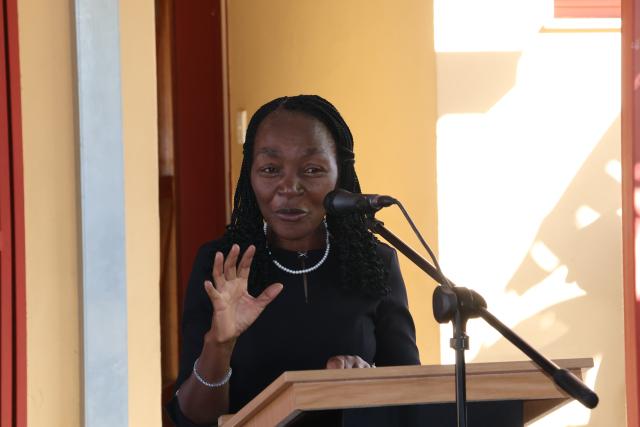Soft Patch for Namibia Ahead of Energy Boom
Namibia’s GDP growth slows to 2.9 percent as mining and construction stall; fiscal consolidation and subdued demand weigh on momentum, even as green-hydrogen and oil prospects underpin long-term optimism.

Namibia’s 2025 growth momentum has significantly decelerated, revealing the underlying fragility of an economy still heavily tethered to traditional commodity cycles and public infrastructure spending. Preliminary data from the Namibia Statistics Agency show GDP expansion of just 2.9 percent year-on-year in the second quarter, a sharp drop from 5.3 percent recorded a year earlier. This critical slowdown, driven primarily by weaker mining output and stagnant construction activity, is occurring just as international investors had begun pricing Namibia as one of southern Africa’s most promising frontier economies—especially following the recent discovery of world-class offshore oil and gas reserves.
The proximate cause of the deceleration lies in the contraction of the mining sector, which shrank 4.8 percent year-on-year in Q2, reflecting both global and local headwinds. On the global side, softer demand for diamonds and uranium—Namibia’s top two merchandise exports—has trimmed overall output. De Beers’ aggregate sales volumes have dropped nearly 20 percent from the 2023 average, while uranium spot prices, though still elevated near US $80 per pound, have faced persistent logistical bottlenecks that limited realized exports. Domestically, planned maintenance shutdowns at several processing facilities, including Rossing Uranium, compounded the slowdown, highlighting infrastructure vulnerabilities.
The construction sector, another critical historical growth driver, remains constrained by subdued public-sector capital expenditure. Fiscal consolidation, a policy aimed at narrowing the budget deficit toward a target of 4.5 percent of GDP, has slowed the rollout of new national infrastructure projects. With government spending historically accounting for roughly 40 percent of total investment, this deliberate restraint has inevitably rippled across local supply chains, curbing employment creation and private-sector multiplier effects. The private-housing market, too, has cooled as mortgage rates rose in lockstep with the Bank of Namibia’s 7.5 percent policy rate, broadly aligned with the South African Reserve Bank to maintain the currency peg against the South African rand (ZAR).
In the broader macro picture, Namibia’s external balances remain stable but currently lack dynamism. Export revenues are under pressure, even as import demand for specialized capital goods tied to future oil developments has started to pick up. The result has been a narrowing but still positive trade balance, cushioning the current account from deeper deterioration. The Namibian dollar has mirrored the ZAR’s mild volatility, trading near N $18.3 per US dollar—a rate that moderates imported inflation but fundamentally limits the country's monetary policy flexibility. This tight relationship to the ZAR ensures regional currency stability but prevents independent monetary policy responses to domestic cyclical slowdowns.
That said, structural opportunities remain overwhelmingly strong, underpinning long-term optimism. The government’s diversification agenda, anchored in the Harambee Prosperity Plan II, is gaining traction through massive green-hydrogen and renewable-energy investments. The US $10 billion Hyphen Hydrogen Energy project, now in the feasibility stage, is projected to start operations by 2028, potentially lifting national exports by over 6 percent of GDP annually. Meanwhile, TotalEnergies (EPA:TTE) and Shell (LSE:SHEL) continue rigorous appraisal of their world-class offshore discoveries, with final production decisions expected in late 2025. These energy developments are projected to fundamentally reshape Namibia’s economic base over the next decade, reducing vulnerability to traditional mining cycles and firmly anchoring long-term fiscal sustainability.
For institutional investors, however, the near-term calculus remains cautious. Equity market sentiment on the Namibian Stock Exchange (NSX:NSXAI) has softened, with the overall index down 3 percent year-to-date after a strong 2024 rally. Local bond yields have held firm—10-year government paper trades around 10.7 percent—reflecting credible fiscal management but also limited near-term growth visibility. The risk-reward balance therefore hinges entirely on medium-term execution: whether the government can maintain strict fiscal discipline while simultaneously catalyzing private-sector investment in energy, logistics, and housing through efficient public-private partnerships.
Policy focus must now shift toward boosting productivity and building economic resilience. Boosting value-addition in mining—such as domestic diamond cutting and uranium conversion—could capture significantly more downstream revenue. Expanding public-private partnerships (PPPs) in infrastructure could revive construction activity without jeopardizing critical debt sustainability targets. Meanwhile, targeted incentives for renewables and agribusiness could generate necessary counter-cyclical growth buffers against future global commodity swings. If executed coherently, these policies could restore growth to the 4 to 5 percent range by 2026, aligning with the IMF’s medium-term forecasts and solidifying the country’s frontier status. In short, Namibia’s current slowdown is cyclical rather than structural—but it exposes how narrow the country’s growth base remains.





